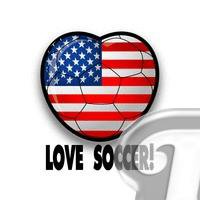An Overview of American Soccer History

The College Era, and Rules Consolidation, 1862-1875
The Working-Class and Immigrant Eras, 1875-1894
The First Dynasties, 1913-1921
The 1960's: The Birth of the American Soccer Renaissance
Outdoor soccer reaches a low: 1985
The Rebirth of Outdoor Soccer, 1988-1994
1994: The World Cup comes to America
From World Cup to Major League Soccer (1995-1996)

The Doldrums, 1895-1913
It was not long before the powers that be attempted to follow on the ALPF's footsteps at a more financially responsible level. The National Association Football League was formed in 1895 from premier teams of the New York City and New Jersey regional leagues, and struggled through four seasons. By this time, there was a waning enthusiasm exacerbated by the infighting among the various associations. Fan interest and participation were falling, and the NAFBL and the American Cup were both suspended in 1898. Other sports were becoming popular such as Polo and Boxing, and suddenly soccer did not look so important anymore. This would not last for long fortunately.
In 1904, US teams participated in the 1904 Olympics in St. Louis, with Galt Football Club of Canada defeated Christian brothers College 7-0 and St. Rose School 4-0 for the gold medal. This must have sparked some enthusiasm, as the St. Louis Soccer League went professional in 1906, the same year as the NAFBL and the American Cup were revived. By this time, New England was beginning to wane as the premier hotbed of the country and most American Cup winners would come from New Jersey/New York or Philadelphia. The revived National Association Football League, formed by a group of people from regional state and local leagues, consisted of teams, which had previously played in municipal leagues. Originally operating out of the New York-New Jersey area, it eventually added Bethlehem Steel, a powerhouse from eastern Pennsylvania, and the league operated until 1921. This was the first truly successful pro league in the US.